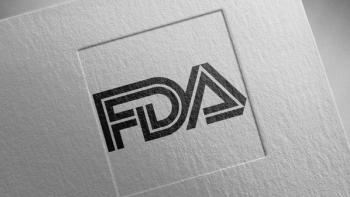
Selenium Supplements Fail to Show Diabetes Benefit
COVENTRY, England -- Selenium supplementation does not prevent diabetes and might actually precipitate it, a large prevention trial has suggested.
COVENTRY, England, July 10 -- Selenium supplementation does not prevent diabetes and might actually precipitate it, a large prevention trial has suggested.
Contradicting evidence from preclinical and observational studies, a mean follow-up of almost eight years showed that the diabetes risk more than doubled in those with the highest selenium levels at baseline who took supplements, compared with those who had the lowest baseline levels.
Patients randomized to selenium supplementation had a type 2 diabetes incidence of 12.6 per 1,000 person-years versus 8.4 for those not receiving nutrient supplements, Saverio Stranges, M.D., Ph.D., of Warwick Medical School and University Hospital in Coventry, and colleagues at the U.S. Department of Agriculture, reported online ahead of Aug. 21 publication in the Annals of Internal Medicine.
The difference translated into a hazard ratio of 1.55, a 55% greater risk of developing type 2 diabetes, they reported.
The study had its origin in preclinical data suggesting low-dose selenium supplementation has a favorable effect on glucose metabolism. Also, observational studies had indicated that dietary or plasma antioxidants might protect against type 2 diabetes.
In an editorial that accompanied the report, Eliseo Guallar, M.D., DrPH, of the Johns Hopkins Bloomberg School of Public Health, and co-authors there, pointed out that more than 1% of the U.S. population takes selenium supplements, and more than 35% take multivitamin and multi-mineral supplements that may contain it.
Yet, they added, the risk of selenium deficiency in the U.S. is negligible. An estimated 99% of the U.S. population has plasma selenium levels that are more than 95 ng/mL, although selenium-driven antioxidant activity plateaus at plasma selenium levels of 70 to 90 ng/mL. As a result, selenium supplementation would be unlikely to increase antioxidant activity.
They emphasized that the benefits of selenium supplementation are unproven, the mineral has a narrow therapeutic range, and it can be toxic. They concluded that "the U.S. public needs to know that most people in this country receive adequate selenium from their diet. By taking selenium supplements on top of an adequate dietary intake, people may increase their risk for diabetes."
Because published literature suggests an association between a relative deficiency of selenium and diabetes, the investigators examined diabetes risk by baseline plasma selenium level. They found a statistically significant exposure-response gradient (P=0.038). Patients in the highest selenium tertile at baseline had a diabetes hazard ratio of 2.70 compared with patients in the bottom tertile.
In the absence of placebo-controlled trials to evaluate the long-term effects of selenium on type 2 diabetes risk, the investigators examined data from the Nutritional Prevention of Cancer Trial. Designed primarily to assess the effects of selenium supplements on cancer risk, the trial involved 1,312 patients who were randomized to 200 g/d of selenium or placebo and followed from 1983 through 1996.
The cohort included 1,202 patients who did not have type 2 diabetes at baseline, and that subset formed the basis for the current analysis. The selenium and placebo groups did not differ with respect to baseline characteristics.
Overall, 97 new cases of type 2 diabetes were diagnosed during an average of 7.7 years of follow-up. The cases translated into an incidence of 10.5 per 1,000 person-years, consistent with other studies of predominantly Caucasian populations, the authors said.
Of the total number of new cases of type 2 diabetes, there were 58 in the selenium group and 39 in the placebo group. Selenium's lack of beneficial effect on diabetes risk persisted after stratification of the data by age, sex, smoking status, and body mass index. Diabetes incidence was consistently, though not significantly, higher in the selenium group within all subgroups examined.
Newsletter
Enhance your clinical practice with the Patient Care newsletter, offering the latest evidence-based guidelines, diagnostic insights, and treatment strategies for primary care physicians.


















































































































































































































































































